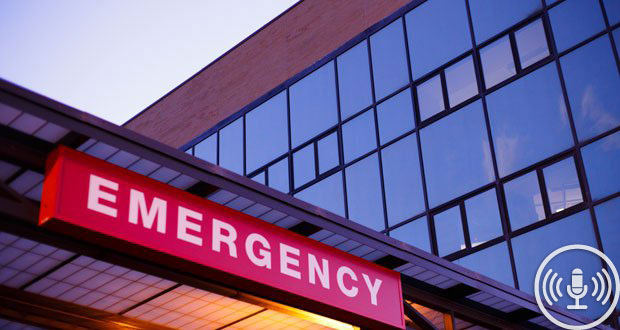Low blood pressure and abnormally rapid breathing are two main indicators that a person presenting in an emergency department is at an elevated risk of deteriorating and dying in the short term. That is a central finding of a Deakin University study published in European Journal of Emergency Medicine and Journal of Advanced Nursing.
The study sought to determine what risk factors triage and nursing staff should be on the lookout for in patients; those that more often that others preceded declines in patients once that had been transferred out of emergency and into hospital wards.
In the case of low blood pressure and rapid breathing, the study found these patients were 4 times more likely to die in hospital and 10 times more likely to be admitted to intensive care.
“Our study was conducted against a backdrop of increased emphasis on reducing the time patients spend in emergency departments as a way of improving the quality of emergency care and reducing overcrowding,” professor Julie Considine said.
“Time-driven performance targets, however, lead to concerns that more unstable patients are transferred to the wards, which could result in increased cardiac arrests and activation of emergency response teams.
“What our research has shown is that we can use evidence to understand which patients are at risk of deterioration on the wards as they are leaving the emergency department and then direct ward resources to the patients with the greatest risk of getting sicker. Such an approach may prevent patients deteriorating to the point of an emergency call, following which one in three patients will die during hospital admission.”
The results are based on a sample of 1,980 patients taken from 3 Melbourne hospitals.
Considine stressed why these results were important for the nursing community to digest.
“Nurses are the guardians of patient safety and the professional group that carry the highest level of responsibility for the accurate measurement and interpretation of clinical data,” Considine said.
“Nurses also have incredibly high workloads with some studies reporting nurses competing an average of 72 tasks per hour. Our results will enable nurses to further prevent poor outcomes by allowing objective assessment of which patients need higher levels of attention.
“We are currently testing the usefulness of our results in a new group of consecutive patients admitted from the emergency department to medical and surgical wards. We hope that we can develop easy to use criteria to identify high risk patients that can inform care planning, particularly frequency of nursing and medical assessments and early specialist referrals.”
Click below to hear more from Considine.
Do you have an idea for a story?Email [email protected]
 Aged Care Insite Australia's number one aged care news source
Aged Care Insite Australia's number one aged care news source

